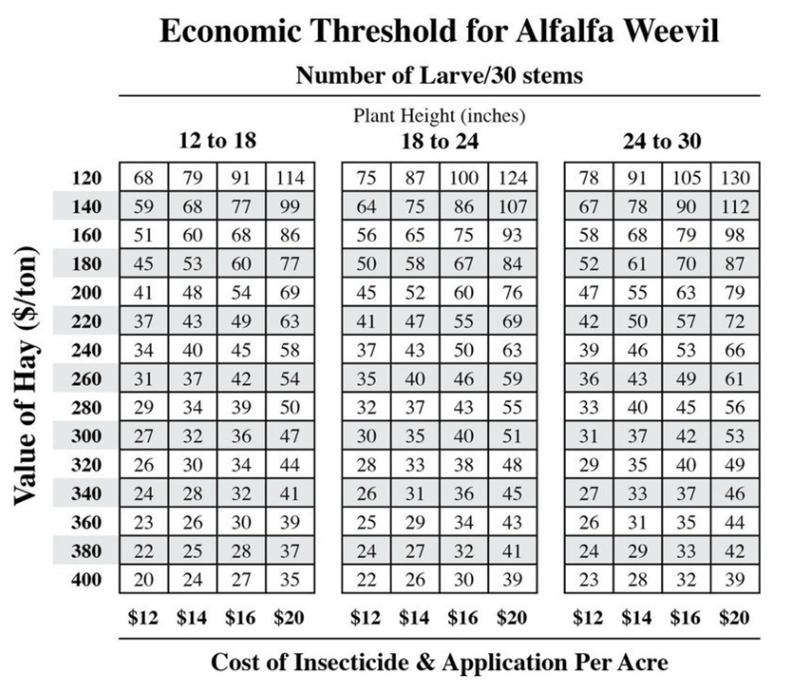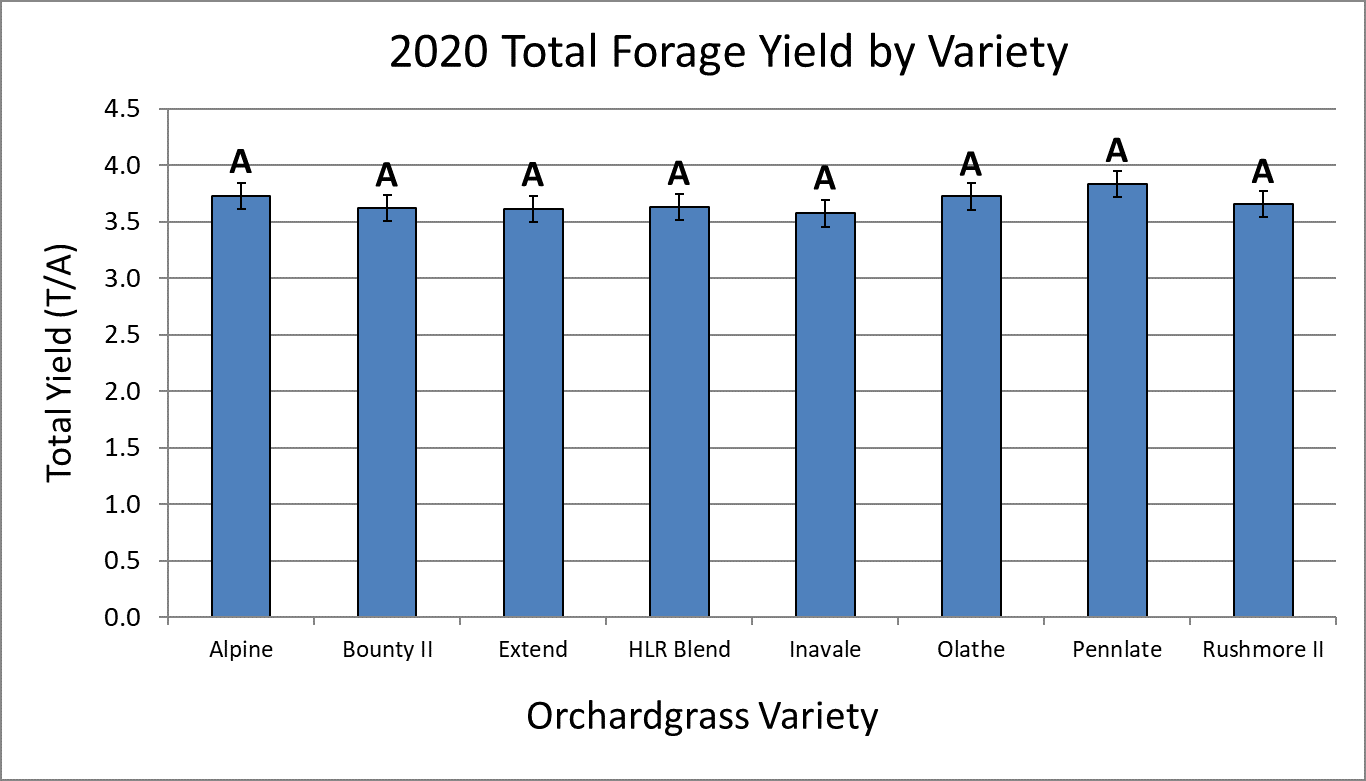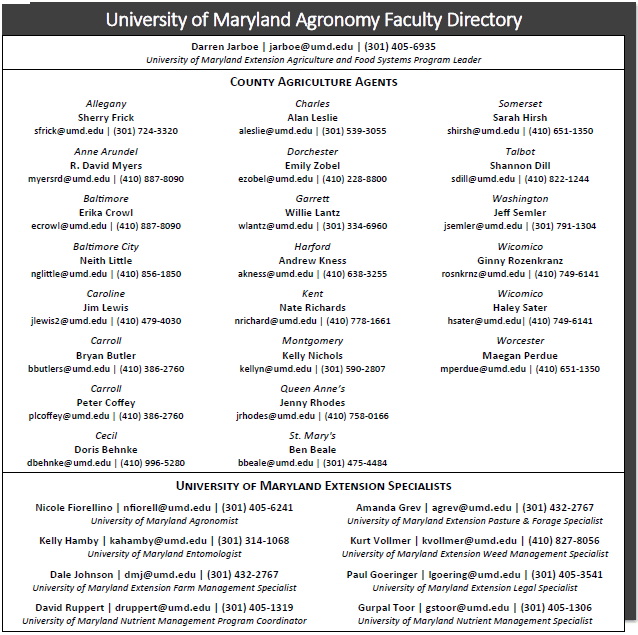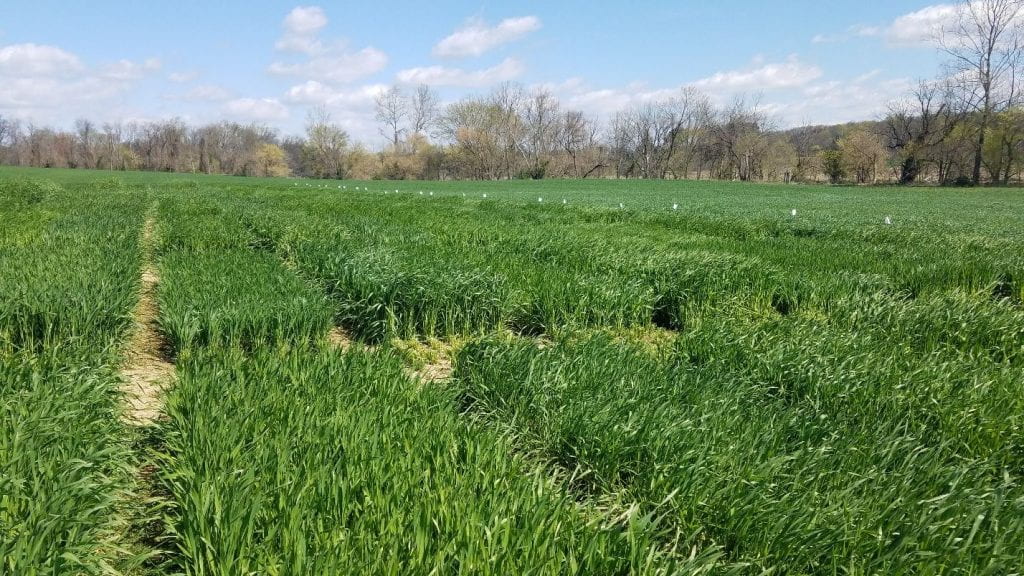Amanda Grev, Pasture & Forage Specialist
University of Maryland Extension
With a new growing season comes new opportunities, one of which is the opportunity to do a better job with making hay. With spring being a busy time of year, hay-making is often one of the lower priorities on the long list of things to do, but this means that all too often much of the hay that is made is moderate to lower in quality. In many cases, making better quality hay can significantly reduce the need for supplemental feed purchases and help keep adequate condition on animals. Below are some practical considerations for improving the quality of your hay this year.
Harvest at the Correct Maturity Stage
The single most important factor affecting forage quality is the stage of maturity at the time of harvest. This is especially true in the spring when forages are growing and maturing rapidly. For high quality hay, harvest must start at an earlier growth stage—a good goal is around the boot stage for grasses or around late bud to early bloom for legumes. In a mixed grass-legume stand, the decision for the first cut should be based on the maturity of the grass, since grasses usually mature earlier than legumes in the spring.
Cut Early, Wide, and High
Because plants continue to use carbohydrates for respiration during the night but are not able to fix sugar through photosynthesis, the nonstructural carbohydrate (NSC, or sugar and starch) content of a plant is lowest in the early morning hours prior to sunrise. At sunrise, the plant can resume the photosynthetic process, allowing NSC concentrations to increase throughout the day and reach a peak in late afternoon. However, even though NSC concentrations are usually highest in the late afternoon, cutting hay late in the day doesn’t leave much time for forages to dry before nightfall. In a high rainfall environment, maximizing curing time should be the highest priority. Therefore, hay should be mowed in mid- to late-morning after the dew has dried off. This will allow for a full day of drying right away, maximizing exposure to sunlight and wind and resulting in a faster drop in moisture and reduced respiration.
When mowing, set the mower to make as wide of a swath as possible, ideally at least 70% of the cut area. Maximizing the swath width shortens the wilting time by exposing a larger portion of the forage to direct sunlight, leading to faster drying and preserving more digestible dry matter. Avoid cutting hayfields too close. If not properly adjusted, disc mowers can cut very close to the soil surface and this can cause significant damage to cool-season grass stands. Be sure to leave 2 to 3 inches of residual for alfalfa and 4 inches for cool-season grasses. Not only will this result in improved stand persistence, earlier regrowth, and sooner subsequent cuttings, but the stubble will help to elevate the swath and promote air flow and rapid drying.
Rake, Ted, and Bale at the Correct Moisture
Forage should be tedded or raked above 40% moisture. Tedding and raking the forage while it is still pliable helps to reduce leaf loss and maintain forage quality. Once the moisture content is below 40%, leaf losses increase rapidly, particularly for legumes. Adjust the rake to minimize the amount of tines touching the ground to avoid soil contamination. Using rakes that handle the hay gently or slowing the speed of the rake are also ways to further minimize leaf loss and maintain forage quality.
Bale the forage at 15 to 18% moisture. Baling in this moisture range inhibits mold growth and reduces heating. Hay that is excessively dry will have greater leaf loss due to leaf shatter, and hay that is too wet (above 20% moisture) is prone to excessive heating. Of course the worst case scenario is the potential for spontaneous combustion, but even heated hay that doesn’t burn is subject to having high concentrations of heat-damaged, indigestible protein.
Time Cuttings Appropriately
Appropriate timing includes not only harvesting at the ideal forage maturity, but also timing your cutting schedule for optimal growth based on seasonal weather conditions. For example, completing the first cutting in a timely manner allows time for adequate regrowth and a good second cutting prior to the onset of the hot summer months. A nitrogen application following first harvest can help with this by stimulating forage regrowth.
Be sure to allow cool-season hayfields to go into the summer with at least 5 to 6 inches of regrowth; this will shade the crown of the plant, moderating its temperature and reducing soil moisture losses. And finally, time fall hay cuttings to allow stands enough time to regrow and replenish their carbohydrate reserves prior to winter dormancy.
Ensure Balanced Soil Fertility
A sound fertility program provides adequate nutrients for the growing plant. In a forage system, this involves more than simply adding nitrogen, phosphorus, and potassium; it should also include monitoring soil pH, soil compaction, nutrient removal rates, and overall nutrient status.
High-yielding cuttings of hay remove substantial amounts of nutrients from fields, making a balanced fertility program essential for optimizing hay production. Take the time to soil test and apply nutrients and lime according to soil test results. Use nitrogen to promote growth in the spring and throughout the growing season. Avoid using “complete” fertilizers like 10-10-10, which commonly over-apply phosphorus and under-apply potassium. Adequate soil fertility is critical to achieving optimum forage production and quality.
Store Hay Properly
Last but not least, hay that has been baled will need protection from the weather to avoid losses in both quality and quantity. Losses during hay storage can accumulate quickly. To avoid this, store hay off the ground and preferably under cover. Much of the weathering damage is a result of the hay bale wicking moisture up from the ground, so storing hay off the ground can greatly reduce deterioration. Protecting hay from weathering through proper storage will help to reduce dry matter losses and maintain forage quality.



